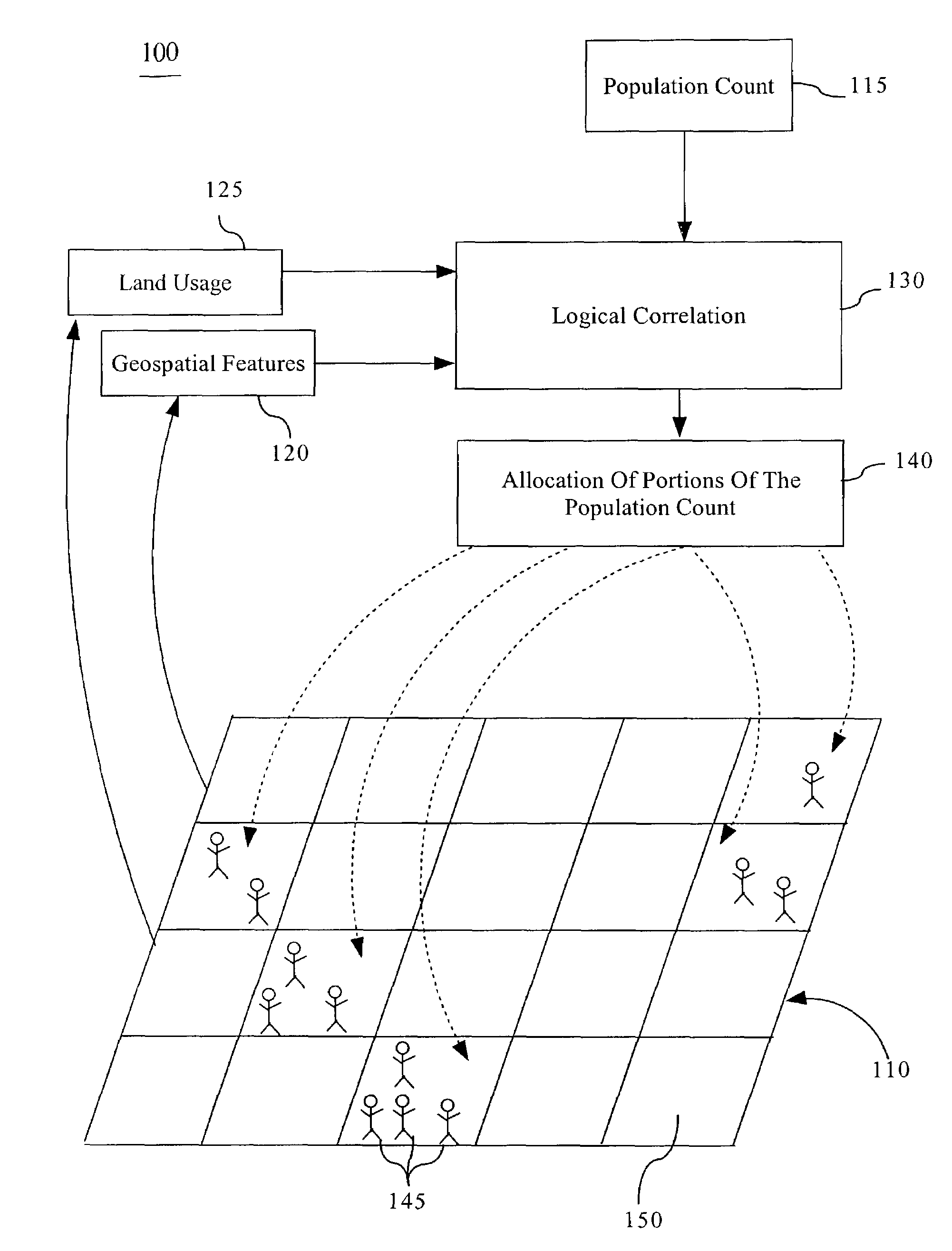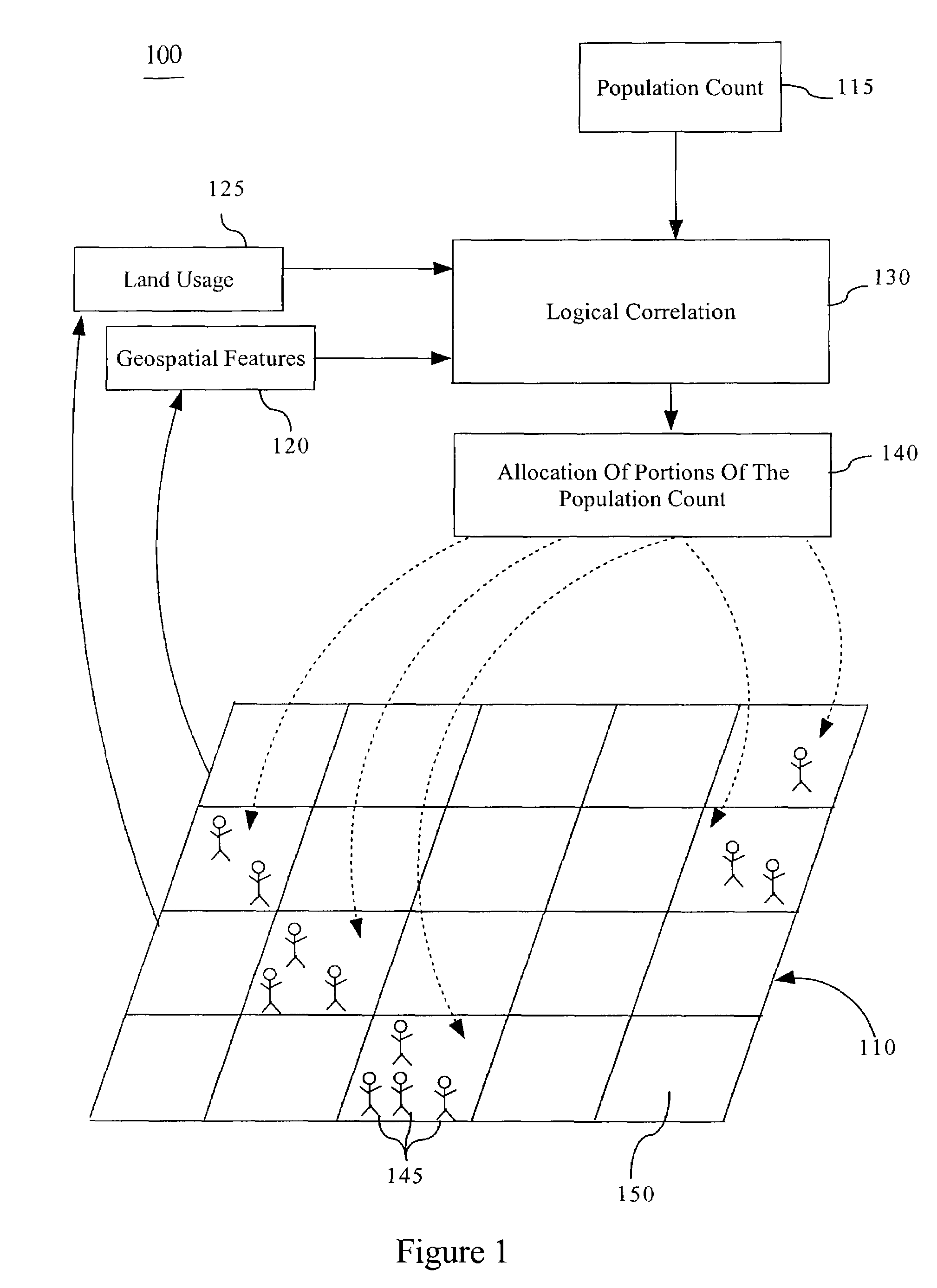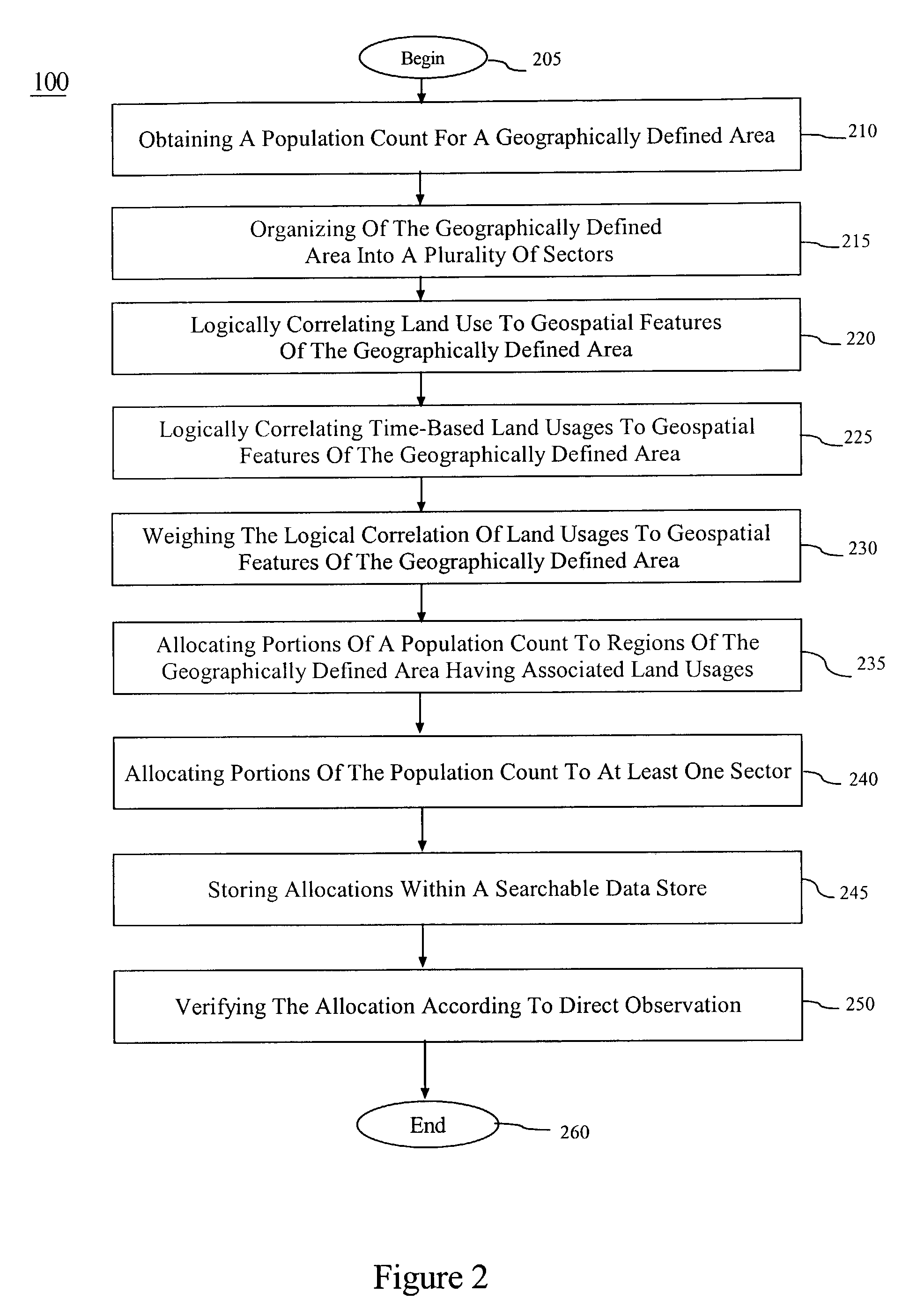Method for spatially distributing a population
a technology of spatial distribution and population, applied in the field of modeling census data, can solve the problems of limited potential extractable information from population data, limited information about regions, and little, if any, information regarding
- Summary
- Abstract
- Description
- Claims
- Application Information
AI Technical Summary
Problems solved by technology
Method used
Image
Examples
Embodiment Construction
[0015]Geospatial features can include the geographic location and characteristics of natural and constructed features and boundaries of the earth and can include human bestowed characteristics, such as naming a geographically defined area. A non-exhaustive list of geospatial features can include transportation networks, such as roads, waterways, railroads, subways, and the like, slope of the land surface, night time lights, and land cover, such as desert, arid grasslands, forests, water, wetlands, cultivated lands, man-made structures and the like. A geographically defined area, by comparison, can include any land or water mass having natural boundaries, political boundaries, or arbitrarily assigned boundaries.
[0016]Unlike geospatial features in a geographically defined area, “land usage” can refer to any form of interaction with geospatial features within the geographically defined area. In this regard, land usage refers to qualitative and quantitative human interaction with the ge...
PUM
 Login to View More
Login to View More Abstract
Description
Claims
Application Information
 Login to View More
Login to View More - R&D
- Intellectual Property
- Life Sciences
- Materials
- Tech Scout
- Unparalleled Data Quality
- Higher Quality Content
- 60% Fewer Hallucinations
Browse by: Latest US Patents, China's latest patents, Technical Efficacy Thesaurus, Application Domain, Technology Topic, Popular Technical Reports.
© 2025 PatSnap. All rights reserved.Legal|Privacy policy|Modern Slavery Act Transparency Statement|Sitemap|About US| Contact US: help@patsnap.com



